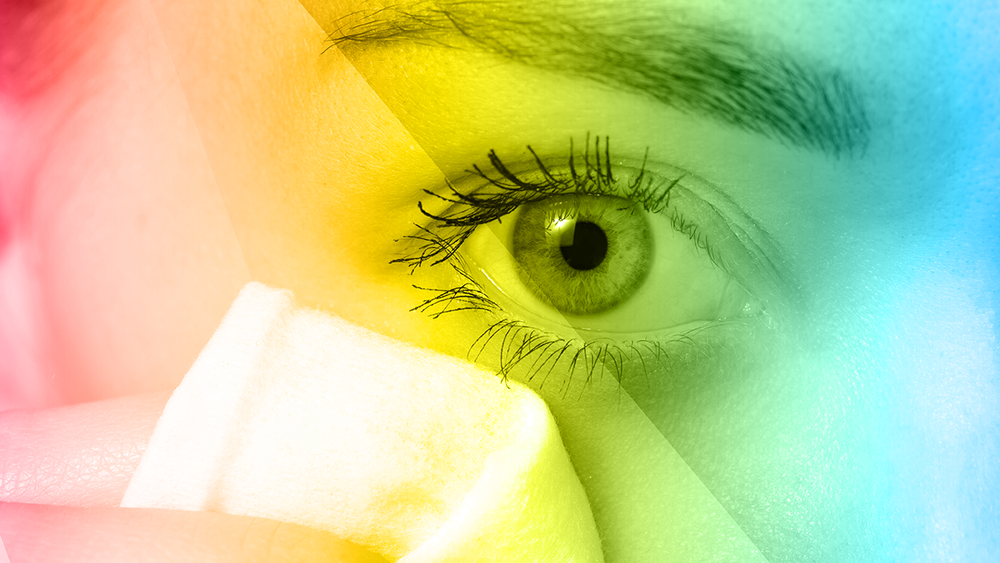
When I’m behind the microscope, looking at a patient’s eyelids and eyelashes, I take the opportunity to educate them about the importance of lid hygiene and how to practice it. Many of my patients now have a twice-a-day lid hygiene routine, guided by a simple explanation and a short take-home instruction list.
Who needs lid hygiene?
My initial advocacy for daily lid hygiene began by telling women how to remove makeup, but I realized many more patients could benefit; after all, we see the prevalence of blepharitis, meibomian gland dysfunction (MGD), and dry eye disease (DED) in a wide range of demographics. But given that the risk of these conditions is so high, eyelid hygiene is actually a good habit for everyone to form.
For children, it’s important to establish good ocular hygiene habits early on – preferably around the age of six, when they start brushing their teeth on their own. We must do everything we can to stem the increasing numbers of kids and teens with irreversible meibomian gland loss.
Explaining the problem to patients
Aside from some blepharitis sufferers, virtually every patient tells me they had no idea they should be cleaning their eyelids. Here’s the simple explanation I follow, adjusting it for age.
- We have normal skin flora all over our bodies, including our eyelids. On our eyelids, we have bacteria, and many people have mites called demodex living in their eyelash follicles.
- Sometimes these flora multiply beyond the normal numbers. This happens for many reasons, including heredity, the environment, and the tough demands we place on our eyes every day.
- When bacteria or mites get out of control, problems happen. Inflammation makes eyes red and uncomfortable, and long-term medical conditions can occur with the eyelids and ocular surface.
- We can manage bacteria and mites by practicing easy eyelid hygiene twice a day.
The hygiene concept is simple but the topic can be sensitive. We should reassure patients with demodex blepharitis or other problems related to eyelid hygiene that this does not imply poor overall hygiene.
Five take-home instructions
I send patients home with a brochure that lists five simple instructions for hygiene and best practices. Patients always ask about specific products to use, so I include my recommendations in the brochure – all items are convenient, affordable, and easy to find.
- Clean your eyelids twice a day. Establish a routine to cleanse your eyelids morning and night – do it after brushing your teeth to help you remember. Choose a healthy lid cleanser; avoid those with preservatives (for example, iVIZIA [Thea] or Biotrue [Bausch & Lomb], which is available as a wipe). Follow with a hypochlorous spray to reduce bacterial load.
- Take off all your makeup before bed. Be careful what products you put near your eyes. Don’t use glittery shadows, and make sure mascara and eyelash serums are safe (I recommend Èyes Are the Story). Also avoid waterproof mascara and eyeliner, which require oil-based makeup remover that gets in your eyes. Instead, use non-waterproof products, and remove them with preservative-free micellar water cleanser, which takes off makeup without the need for additional oil or soap.
- Avoid certain ingredients. Check the packaging of cleansers, eye drops, moisturizers, and makeup to avoid these ingredients: benzalkonium chloride (BAK), butylene glycol (at high concentrations), ethylenediaminetetraacetic acid (EDTA), formaldehyde, isopropyl cloprostenate, PGAs, parabens (methyl-, isobutyl-, propyl- and others), phenoxyethanol, cis-retinoic acid, and retinol. Too often, products made for the eye area contain ingredients that can irritate your eyes.
- Help your eyelids during screen use. Normally, we blink 20 times every minute, but we blink just seven times per minute when we’re staring at screens (1). That’s bad for our eyes. To give your eyes a break, follow the 20/20/20 rule – every 20 minutes, look at something at least 20 feet away for 20 seconds and blink your eyes.
- Avoid drastic eyelash enhancements. For the health of your eyelids, avoid lash extensions, which impair the natural function of your eyelashes and create an unhygienic environment. Stick to mascara instead of over-the-counter lash growth serums like isopropyl cloprostenate, which can have medical and cosmetic side effects (2).
By explaining the need for lid hygiene and making it simple to do, I’ve helped many of my patients establish a twice-daily cleansing routine and adopt healthier habits for their lids and lashes overall. We continue to discuss lid hygiene at every visit, reinforcing the concepts and instructions to make this a lifetime habit.
- M Rosenfield et al., “Cognitive demand digital screens and blink rate,” Comput Hum Behav, 51, 403 (2015).
- MC Mocan MC et al., “The association of chronic topical prostaglandin analog use with meibomian gland dysfunction,” J Glaucoma 9, 770 (2016).
